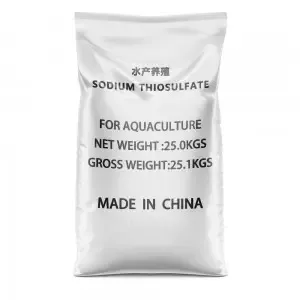



chemical used for purifying water
Chemical Methods for Purifying Water
Water, often referred to as the essence of life, is a vital resource for all living organisms. However, due to industrial activities, agricultural runoff, urbanization, and natural contaminants, the quality of water sources can deteriorate significantly. Consequently, water purification has become an essential process to ensure that the water we consume is safe and clean. Various chemical methods are employed in this process, which can significantly reduce contaminants and improve water quality. This article explores some of the key chemicals used in water purification and their mechanisms of action.
1. Chlorine The Traditional Disinfectant
Chlorine is one of the most commonly used chemicals for water purification. Its primary role is disinfection, as it effectively kills bacteria, viruses, and other pathogens that could cause waterborne diseases. Chlorine works by disrupting the biochemical processes within microbial cells. When chlorine is added to water, it reacts with the organic matter and pathogens, leading to the formation of chloramines and other by-products. While chlorine is effective, its use can also result in the formation of harmful by-products, such as trihalomethanes (THMs), which are linked to health concerns. Therefore, water treatment facilities must carefully control chlorine levels to ensure safety while maximizing disinfection.
2. Ozone A Powerful Oxidant
Ozone (O3) is another effective chemical used in water purification. As a strong oxidant, ozone can destroy microorganisms like bacteria, viruses, and protozoa more effectively than chlorine. The process of ozonation involves injecting ozone gas into the water, where it oxidizes and breaks down contaminants. In addition to disinfection, ozone can also remove organic and inorganic impurities, including color and taste issues. Ozone treatment has the advantage of producing fewer harmful by-products compared to chlorine, making it an increasingly popular choice in modern water treatment plants. However, its use requires careful handling, as ozone can be hazardous in high concentrations.
3. Coagulants Flocculation for Enhanced Clarity
chemical used for purifying water

Coagulation is a crucial step in the water purification process, particularly for removing suspended particles and turbidity. Coagulants, such as aluminum sulfate (alum) and ferric chloride, are commonly used to initiate the flocculation process. When added to water, these chemicals neutralize the charges on suspended particles, allowing them to clump together into larger aggregates called flocs. These flocs can then be removed through sedimentation and filtration. The coagulant dosage must be optimized to achieve the best results without introducing excessive residual chemicals into the water system.
4. Activated Carbon Adsorption Excellence
Activated carbon is not a chemical per se, but it plays a vital role in the chemical purification of water through adsorption. It effectively removes organic compounds, chlorine, and other chemicals, improving water taste and odor. Activated carbon can be used in various forms, including granular and powdered forms, and is often employed in filters. As water passes through activated carbon, contaminants adhere to the surface of the granules, effectively purifying the water. Its ability to improve water quality makes it an essential component of many water treatment systems.
5. Ion Exchange Softening Water
Ion exchange is a method often used to soften water and remove specific dissolved ions, such as calcium and magnesium, which cause hardness. This process utilizes ion exchange resins, which swap undesirable ions in the water for more benign substitutes like sodium. When hard water is passed through a bed of resin, the calcium and magnesium ions are captured, and sodium ions are released into the water. This method is particularly common in household water softeners and industrial applications, ensuring that the water is not only safe to drink but also suitable for other uses, such as washing and cooking.
Conclusion
The chemical methods employed in water purification are diverse and essential for safeguarding public health. Each chemical used, from chlorine and ozone to coagulants and activated carbon, plays a specific role in ensuring that water is clear, safe, and palatable. As water quality challenges continue to arise globally, the development and optimization of these chemical methods will remain a critical focus for scientists and engineers in the quest for safe drinking water. By advancing water purification technologies and practices, we can ensure a sustainable water future for generations to come.
-
Why Sodium Persulfate Is Everywhere NowNewsJul.07,2025
-
Why Polyacrylamide Is in High DemandNewsJul.07,2025
-
Understanding Paint Chemicals and Their ApplicationsNewsJul.07,2025
-
Smart Use Of Mining ChemicalsNewsJul.07,2025
-
Practical Uses of Potassium MonopersulfateNewsJul.07,2025
-
Agrochemicals In Real FarmingNewsJul.07,2025
-
Sodium Chlorite Hot UsesNewsJul.01,2025










